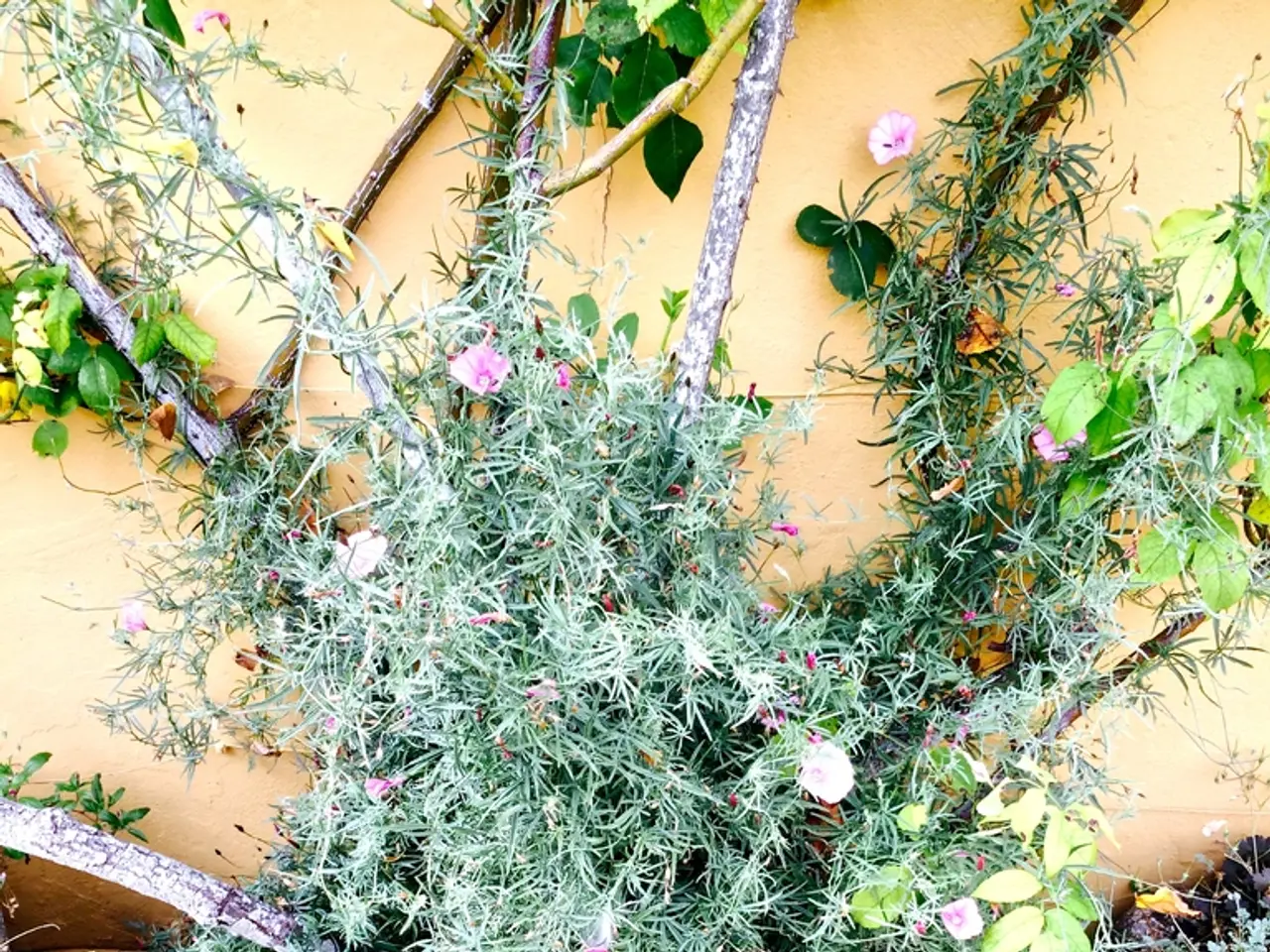Shaded Cottage Garden Greenery: Introduce Whimsy to Tranquil Hidden Spots
Shade-Tolerant Plants Brighten Cottage Gardens
Cottage gardens, with their romantic charm and vibrant colours, are a popular choice for many garden enthusiasts. However, creating a colourful and diverse cottage garden can be challenging in shady spots. Fortunately, there is a range of shade-tolerant plants that can thrive in these areas, adding layers of texture, height, and colour to your garden.
One such plant is Astilbe japonica, which grows well under black walnut trees, a notoriously challenging area for many plants. This perennial blooms in late spring and early summer with feathery plume flowers among fern-like leaves, adding a touch of elegance to your garden.
Another excellent shade-tolerant plant is Kerria japonica, a shrub that thrives in partial to full shade. Its charming five-petaled flowers add height up to 10 feet, making it an ideal choice for adding structure to your garden. Regular moisture and pruning are required for optimal growth.
Pulmonaria spp., or Lungwort, is another perennial that thrives in full to partial shade with consistently moist soil. It boasts vibrant pink and purple flowers and attractive spotted foliage, adding a burst of colour to your shady spots.
Black cohosh (Cimicifuga racemosa) is a striking native perennial that produces tall, creamy white flower wands, graceful fern-like foliage, and is deer-resistant. It thrives in part to full shade in moist, rich soil, making it a great option for tricky spots in a cottage garden.
Hosta, a classic shade garden favourite, is known for its reliability in shady spots and is a common choice in cottage gardens. Its lush foliage adds a touch of elegance and a sense of calm to your garden.
Hardy Geranium (Cranesbill) is a low-growing perennial with colorful flowers from purple to white, suitable for moist, well-drained soil in shade. It adds a splash of colour to your garden from spring to early summer.
Toad Lily offers unique, orchid-like spotted flowers in late summer to autumn, flourishing in full shade and moist soil. Its striking blooms will certainly catch the eye of any passerby.
Creeping Jenny (Lysimachia nummularia) is a fast-spreading groundcover with bright chartreuse leaves and small yellow flowers that brighten shaded areas. Its vigorous growth makes it an excellent choice for suppressing weeds.
Vinca Minor (Periwinkle) is an evergreen groundcover with dark green leaves and purple flowers that flourish in full shade. Its evergreen nature makes it an excellent choice for adding year-round interest to your garden.
Bee Balm, Bleeding Heart, Columbine, and New England aster are other typical cottage garden perennials that tolerate shade and enrich garden diversity and colour. Asters, in particular, provide daisy-like flowers for a cottage garden, many of which grow best in partial shade and bloom in late summer or fall.
Corydalis lutea grows in low mounds with fern-like foliage and small yellow flowers that bloom from spring through fall. This perennial grows in zones 5 to 7 and tolerates even heavy shade, making it a good option for tricky spots in a cottage garden.
Lady's Mantle (Alchemilla mollis) is a cottage garden plant with lace-like, green leaves that are often used as a groundcover. It blooms with small, yellow-green flowers in early summer.
Cranesbill (Geranium sylvaticum), also known as woodland geranium, is hardy in zones 4 through 9 and can grow well in partial shade. It produces delicate flowers in a range of colors and with delicate veining, growing in low clumps.
By carefully selecting shade-tolerant plants, you can create a layered, naturalistic, and colourful cottage garden impression even in shady spots. To ensure the best results, ensure soils are moist but well-draining and consider mixing these plants to provide seasonal interest and support local ecology such as pollinators. With these plants, you can enjoy a beautiful cottage garden all year round.
Cottage gardens, despite their challenging spots, can still display a vibrant and diverse appearance with the right selection of shade-tolerant plants. For instance, Astilbe japonica, Kerria japonica, Pulmonaria spp., Black cohosh (Cimicifuga racemosa), Hosta, Hardy Geranium (Cranesbill), Toad Lily, Creeping Jenny (Lysimachia nummularia), Vinca Minor (Periwinkle), and Corydalis lutea are all suitable options. By incorporating these plants into your home-and-garden, you can enhance the lifestyle provided by your garden, adding layers of texture, height, and colour, and ensuring a beautiful cottage garden setting, even in the shade.





